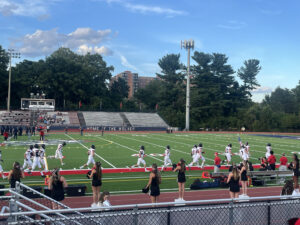Put away the mugs, goblets and shot glasses for today. I’m adding a new element to this column, occasionally reporting on non-alcoholic drinks.
It’s an offshoot of an online expansion of my Web site (billdowd.com) in response to readers who’ve e-mailed me various questions and suggestions about that vast part of the beverage market. Besides, having the right line of soft drinks, waters, fruit juices, teas and coffees is crucial to proper home entertaining.
Turbo-fizz. Lock that term away in your memory bank. I suspect you’ll be hearing a lot about it when the soft-drink industry gets into full marketing mode.
"Coca-Cola, Pepsi and Britvic, the soft-drinks manufacturers, are developing a raft of increasingly wacky space-age new products in an attempt to stem the decline of growth in the fizzy drinks market," Mark Choueke reported in last Sunday’s London Telegraph.
"Innovations being developed by the industry include a ‘turbo-fizz’ dial feature on the side of a can that allows consumers to increase or reduce the amount of bubbles in their drink. Drinks that change color are also being developed. Such features could be the norm within five years, according to industry experts."
Of course, this could be one gigantic joke. When I Googled "turbo-fizz" the only hit I got was on a "Star Wars" fan site that showed a lot of humor.
In its list of SW-esque foods and drinks it listed "Turbofizz — A highly carbonated drink popular in the Corporate Sector."
It also listed such things as Death Star Popcorn Balls, Boba Fett-uccine and Harmon Kizzlebrew, a beer that "is an excellent accompaniment to steamed yazstrimskizzies."
Energy drinks are found in such profusion on the market that there’s little chance the product will get any press unless a manufacturer comes up with a new gimmick.
Anheuser-Busch’s new drink meets that criterion with the inclusion of goji, a small, high-antioxidant Tibetan berry that helps impart a slightly sweet cherry taste.
For consumers into the minutiae of drink formulae, growers and vendors of goji, also known as wolfberries, say they are loaded with all sorts of nutrients — 18 kinds of amino acids, 21 trace minerals, and "500 times the amount of vitamin C, by weight, than oranges, making them second only to camu-camu berries as the richest vitamin C source on Earth."
The overall formula contains carbonated water, sucrose, goji berry and acerola juice, guarana — a "natural caffeine," vitamins B-6, B-12 and C, and lychee flavor.
180 Red joins a product line that includes 180 Blue, 180 Blue Low-Calorie and 180 Sugar-Free Orange Citrus Blast. It is available in 8.2- and 16-ounce cans.
Coffee finally has regained supremacy in America’s drinking habits.
The percentage of adults who drink a daily cup of coffee exceeds those who drink a soft drink daily for the first time since 1990, according to the National Coffee Association.
Of nearly 3,000 adults reached in a random January telephone survey for the National Coffee Drinking Trends report, 57 percent said they drank coffee every day, up 1 percent from 2006; 51 percent said they drank a soft drink daily, down 6 percent from the prior year. The number of adults who drink coffee at least once a week is 67 percent, down 1 percent from 2006. The survey had an error rate of plus or minus 3 percent.
The increase is mostly in regular coffees, rather than the highly advertised "gourmet" blends, according to market research from Starbucks Corp.
And, speaking of coffee, for those within reach of a 7-Eleven who don’t get enough kick from regular coffee, the convenience store chain is peddling something called Fusion Energy Coffee.
It’s coffee hyped by the addition of guarana, ginseng and yerba mate, the same ingredients found in numerous energy drinks. The chain also has plans to offer "Energy Slurpees" and other high-caffeine products.
—
(William M. Dowd covers the world of adult beverages at BillDowd.com)
© 2007 Hearst Newspapers












